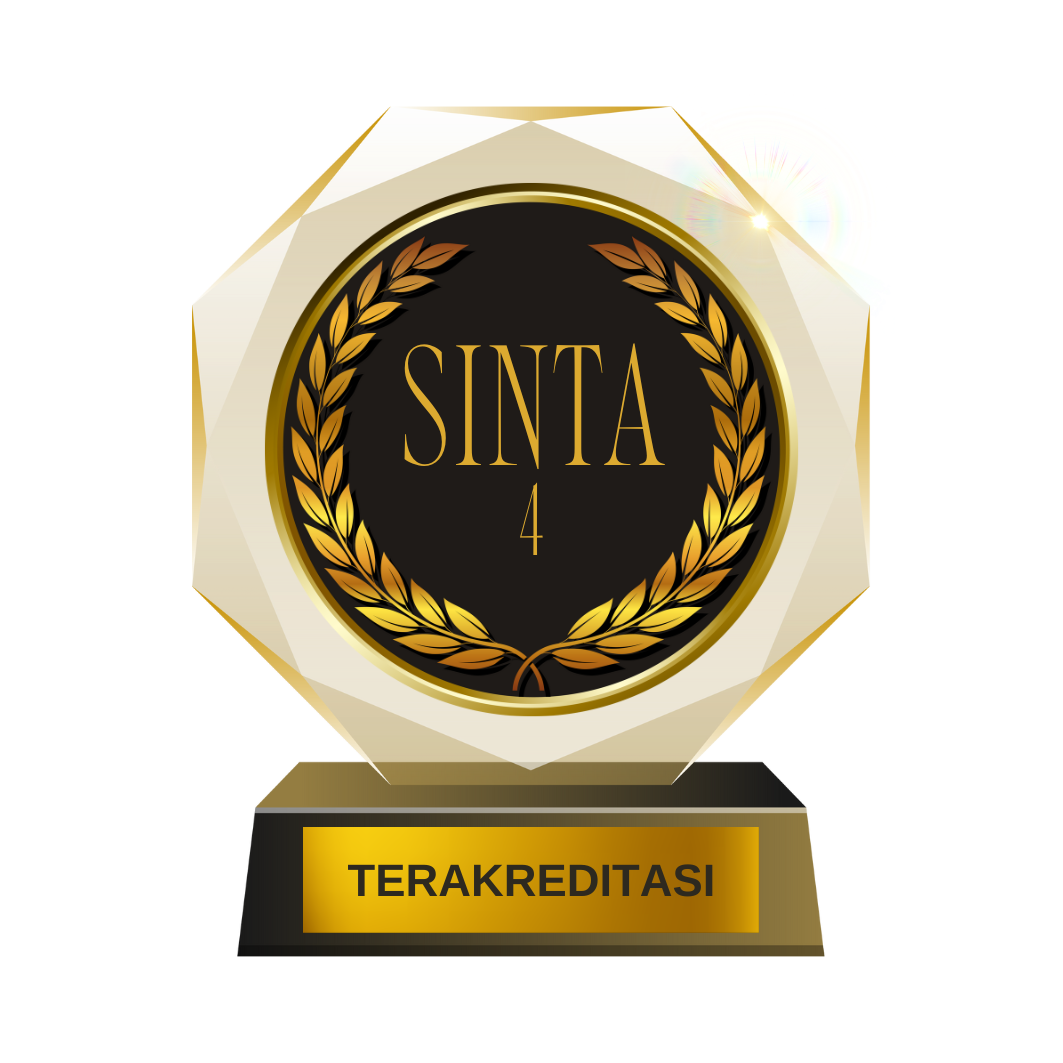Stance Classification Pada Berita Berbahasa Indonesia Berbasis Bidirectional LSTM
DOI:
https://doi.org/10.52985/insyst.v3i1.148Keywords:
Berbahasa Indonesia, Berita Palsu, Bidirectional LSTM, Stance Classification, GRUAbstract
Berita palsu masih menjadi masalah yang harus mendapat perhatian khusus. Media sosial, termasuk Facebook menjadi salah satu sarana yang mudah dan murah untuk menyebarkan suatu informasi yang bahkan belum tentu kebenarannya. Informasi tentang kesehatan menjadi salah satu topik berita palsu yang banyak tersebar ke masyarakat. Cara yang berbeda untuk mendeteksi berita palsu yaitu dengan menggunakan deteksi sikap (stance detection). Tujuan utama dari penelitian ini adalah merancang model yang memiliki kemampuan terbaik untuk melakukan tugas stance classification pada konteks bahasa Indonesia. Model ini diharapkan dapat digunakan untuk berkontribusi dalam menanggulangi masalah penyebaran berita palsu, khususnya di Indonesia. Metode BiLSTM dan GRU diusulkan untuk digunakan dalam melakukan stance classification terhadap headline berita dengan kelas for (mendukung), against (menentang), dan observing (netral). Stance classification pada penelitian ini menggunakan data sebanyak 3.941 headline berita yang terdiri dari 563 klaim dengan 7 tanggapan. Dataset dikumpulkan dari artikel-artikel berita kesehatan berbahasa Indonesia yang diposting pada laman Facebook. Model pada penelitian ini mampu menghasilkan akurasi F1-score paling tinggi sebesar 64% dengan FastText embedding. Metode GRU dapat menjadi salah satu pilihan tepat untuk melakukan stance classification dengan komputasinya yang lebih sederhana. Kinerja FastText jauh lebih unggul dibandingkan dengan Word2Vec dalam melakukan pembentukan vektor kata karena mampu mengatasi masalah out-of-vocabulary (OOV).
References
W. Ferreira and A. Vlachos, “Emergent: a novel data-set for stance classification,” in Proceedings of the 2016 conference of the North American chapter of the association for computational linguistics: Human language technologies, 2016, pp. 1163–1168.
A. Thota, “Fake News Detection : A Deep Learning Approach,” SMU Data Sci. Rev. Vol. 1 No. 3, Artic. 10, vol. 1, no. 3, 2018.
A. M. Hasan, “Info Hoax Soal Kesehatan Paling Banyak Beredar di Masyarakat,” https://tirto.id/, 2017.
“Hasil Survey Wabah HOAX Nasional 2019,” https://mastel.id/, 2019.
D. Mrowca and E. Wang, “Stance detection for fake news identification,” Eliaswang.Com, 2017.
G. Rajendran, B. Chitturi, and P. Poornachandran, “Stance-In-Depth Deep Neural Approach to Stance Classification,” Procedia Comput. Sci., vol. 132, no. Iccids, pp. 1646–1653, 2018, doi: 10.1016/j.procs.2018.05.132.
P. Chaudhry, A. K., Baker, D. & Thun-Hohenstein, “Stance Detection for the Fake News Challenge: Identifying Textual Relationships with Deep Neural Nets,” Stanford, pp. 1–10, 2017.
K. Miller and A. Oswalt, “Fake News Headline Classification using Neural Networks with Attention.”
E. I. Setiawan et al., “Analisis Pendapat Masyarakat terhadap Berita Kesehatan Indonesia menggunakan Pemodelan Kalimat berbasis LSTM (Indonesian Stance Analysis of Healthcare News using Sentence Embedding Based on LSTM),” J. Nas. Tek. Elektro dan Teknol. Inf., vol. 9, no. 1, pp. 8–17, 2020.
E. Lim, E. I. Setiawan, and J. Santoso, “Stance Classification Post Kesehatan di Media Sosial Dengan FastText Embedding dan Deep Learning,” pp. 65–73, 2020.
K. S. Hasan and V. Ng, “Stance classification of ideological debates: Data, models, features, and constraints,” in Proceedings of the Sixth International Joint Conference on Natural Language Processing, 2013, pp. 1348–1356.
M. Thomas, B. Pang, and L. Lee, “Get out the vote: Determining support or opposition from Congressional floor-debate transcripts,” COLING/ACL 2006 - EMNLP 2006 2006 Conf. Empir. Methods Nat. Lang. Process. Proc. Conf., no. July, pp. 327–335, 2006.
Y. Yang, B. Wu, K. Zhao, and W. Guo, “Tweet stance detection: A two-stage DC-BILSTM model based on semantic attention,” Proc. - 2020 IEEE 5th Int. Conf. Data Sci. Cyberspace, DSC 2020, pp. 22–29, 2020, doi: 10.1109/DSC50466.2020.00012.
I. Augenstein, T. Rocktäschel, A. Vlachos, and K. Bontcheva, “Stance detection with bidirectional conditional encoding,” 2016, doi: 10.18653/v1/d16-1084.
S. M. Reddy, C. Suman, S. Saha, and P. Bhattacharyya, “A GRU-based fake news prediction system: Working notes for UrduFake-FIRE 2020,” CEUR Workshop Proc., vol. 2826, pp. 464–468, 2020.
F. Z. Tala, “A Study of Stemming Effects on Information Retrieval in Bahasa Indonesia,” Universiteit van Amsterdam, The Netherlands.
T. Mikolov, G. Corrado, K. Chen, and J. Dean, “Vector Space,” pp. 1–12.
deryrahman, “Word2Vec Bahasa Indonesia,” https://github.com/, 2019.
P. Bojanowski, E. Grave, A. Joulin, and T. Mikolov, “Enriching Word Vectors with Subword Information,” Trans. Assoc. Comput. Linguist., vol. 5, 2017, doi: 10.1162/tacl_a_00051.
A. T. Mohan and D. V. Gaitonde, “A Deep Learning based Approach to Reduced Order Modeling for Turbulent Flow Control using LSTM Neural Networks,” Cornell Univ., no. April, 2018.
Alex Graves, “Supervised Sequence Labelling with Recurrent Neural Networks,” Springer, Berlin, Heidelb., 2012, doi: https://doi.org/10.1007/978-3-642-24797-2.
K. Cho, “Learning Phrase Representations using RNN Encoder – Decoder for Statistical Machine Translation,” Proc. 2014 Conf. Empir. Methods Nat. Lang. Process. (EMNLP), Doha, Qatar, pp. 1724–1734, 2014.
J. Chung, C. Gulcehre, K. Cho, and Y. Bengio, “Empirical Evaluation of Gated Recurrent Neural Networks on Sequence Modeling,” pp. 1–9, 2014.
Simeon Kostadinov, “Understanding GRU Networks,” 2017.
Downloads
Published
How to Cite
Issue
Section
License
Copyright (c) 2022 Journal of Intelligent System and Computation

This work is licensed under a Creative Commons Attribution-NonCommercial-ShareAlike 4.0 International License.








